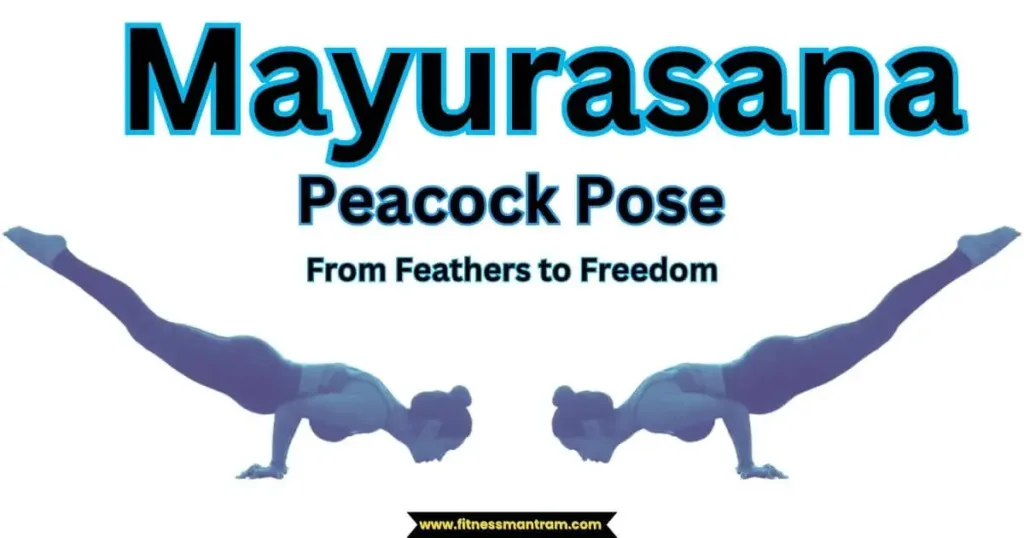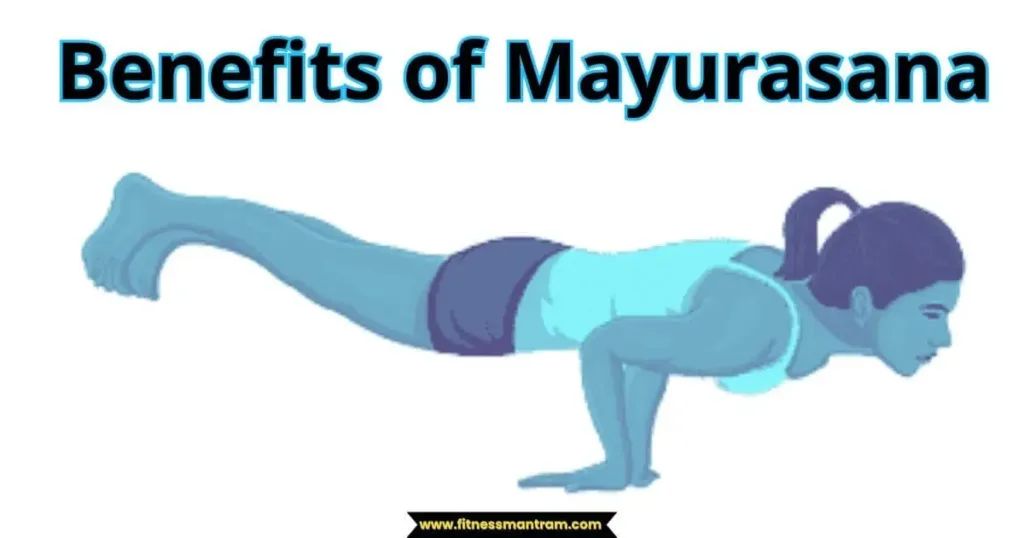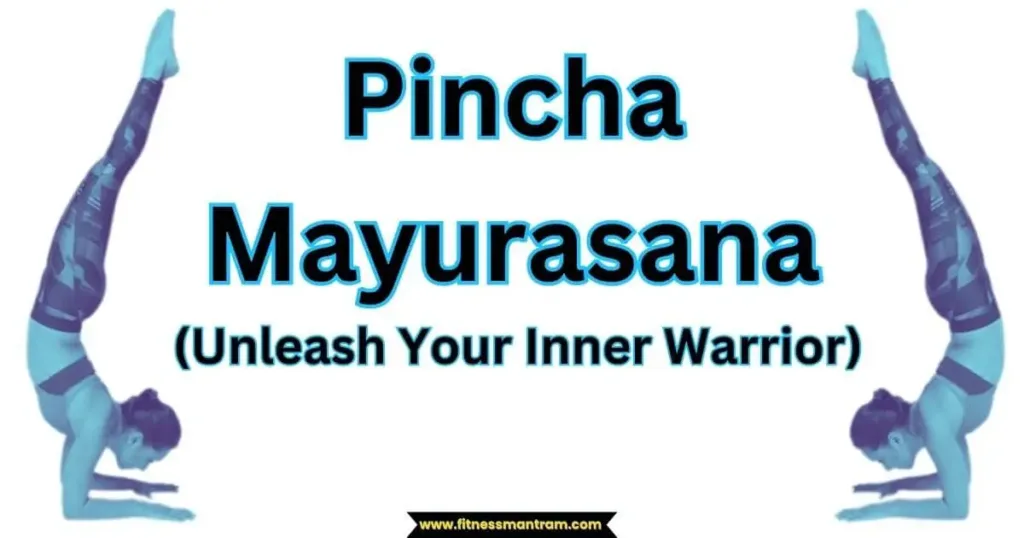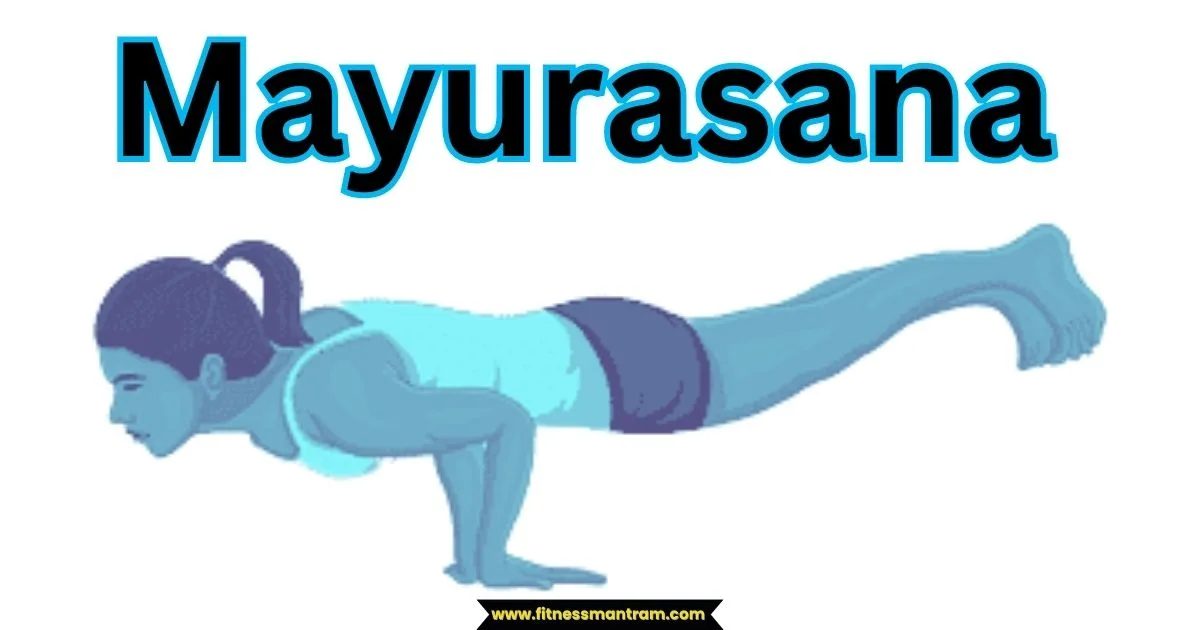Discover the secrets of Mayurasana and experience the transformative power of this challenging yoga pose. Mayurasana, is also known as the Peacock Pose, it is an advanced yoga asana which is a combination of strength, balance, and focus. In this article we will learn step-by-step guide how to perform Mayurasana correctly, its physical and mental benefits, how to modify and create variations, its precautions, and tips for a successful practice. Whether you’re a beginner or an experienced yogi, after reading this full article you will discover how Mayurasana can enhance your yoga journey. So, get ready to master this Peacock Pose!
Introduction
Mayurasana, the peacock pose is a well-known yoga pose that has many positive benefits on our mind and body. When you perform this yoga pose it requires strength, balance and concentration, therefore it make it a challenging yoga pose and which is a great addition to any of our daily yoga practice.
This article will walk you through the correct way to perform Mayurasana, its modifications and variations, tips for a successful practice, and how it can help improve your overall well-being. Once you are aware with its benefits, you will be eager to incorporate it into your regular practice, regardless of whether you experience in doing this pose or just starting out on your yoga journey. So, let’s get started to learn and see what this Mayurasana has to offer!
What is Mayurasana?

Mayurasana, or the Peacock Pose, is an advanced yoga asana that resembles a peacock spreading its feathers. This is balancing type of yoga pose that requires good strength in your arms, shoulder and core and also flexibility in wrists and hips. Therefore this asana is considered one of the most challenging arm balances in yoga but offers numerous benefits for the mind and body when practiced correctly.
Preparing for Mayurasana
If you are a beginner or a regular performer before attempting to practice this asana , it is important to prepare your body and mind for the pose. To do so follow the steps as given below
- Warming up the body: Initially start with a few rounds of Sun Salutations or any other gentle warm-up exercises to awaken your muscles so as to increase the blood flow. Keep your focus on stretching the wrists, shoulders, and core to prepare them for the weight-bearing nature of Mayurasana.
- Engaging the core: Core strength is crucial for maintaining stability in this peacock pose . Incorporate exercises like Plank Pose, Boat Pose, and Leg Raises to strengthen your abdominal muscles.
- Strengthening the wrists and forearms: This asana requires significant strength in the wrists and forearms. Practice wrist stretches, forearm exercises, and handstands to develop the necessary stability and endurance in these areas.
Step-by-Step Guide to Mayurasana
Now that you are done the warm up exercise and are ready to perform, let’s learn in steps how to do Mayurasana.
Starting position
- First begin by kneeling on your mat with your knees hip-width apart.
- Keep your palms on the mat, fingers pointing towards your body.
- Bring your elbows close to your belly and rest them against your abdomen.
- Extend your legs back and stretch them out fully, pressing the tops of your feet into the mat.
- Engaging the core and lifting the legs
- Engage your core muscles and draw your navel towards your spine.
- Shift your body weight forward and slowly lift your legs off the ground, one at a time.
- Keep your legs straight and parallel to the floor, engaging your thigh muscles.
- Finding balance and stability
- Once your legs are lifted, focus on maintaining a straight line from your head to your heels.
- Distribute your body weight evenly between your hands and arms.
- Keep your gaze forward or slightly downward to maintain balance and stability.
- Maintaining the posture
- Breathe deeply and hold the pose for as long as comfortable.
- Start with shorter durations and gradually increase the time as you build strength and confidence.
- Release the pose by gently lowering your legs back to the ground and returning to the starting position.
Benefits of Mayurasana

This asana offers a wide range of benefits for both the physical body and the mind. Some of the key benefits include:
Physical Benefits
- Strengthens the arms, shoulders, and core muscles.
- Improves digestion and stimulates the abdominal organs.
- Increases flexibility in the wrists, hips, and spine.
- Tones the leg muscles and improves overall body posture.
- Enhances circulation and oxygenation of the body.
Mental and Emotional Benefits
- Builds focus, concentration, and mental clarity.
- Promotes self-confidence and self-discipline.
- Reduces stress and anxiety.
- Balances the energy flow in the body, promoting a sense of harmony and well-being.
Mayurasana Side Effects:
This asana is an advanced yoga pose that offers several benefits for the body and mind. Secondly, it is also essential to be aware with the risks and precautions associated with this pose. Here are some considerations:
- Wrist and forearm strain: Mayurasana requires strong wrists and forearms to support the body’s weight. If you have any existing wrist or forearm injuries, it is advisable to avoid or modify this pose to prevent further strain or discomfort.
- Shoulder and neck tension: The pose involves balancing the body on the forearms while engaging the shoulder muscles. Practicing Mayurasana excessively or with improper alignment may lead to shoulder and neck tension or strain. It’s essential to maintain proper form and listen to your body, avoiding excessive pressure on these areas.
- Digestive discomfort: Mayurasana is known to stimulate the abdominal organs and improve digestion. However, individuals with existing digestive issues, such as ulcers or hernias, should avoid this pose or seek guidance from a qualified yoga teacher to modify it accordingly.
- High blood pressure or heart conditions: Peacock Pose is considered an intense inversion that increases blood flow to the head. People with high blood pressure or certain heart conditions should avoid or approach this pose with caution. In such case it is advisable to speak and consult with your healthcare professional or certified yoga teacher before attempting it.
- Pregnancy: Mayurasana is generally not recommended for pregnant individuals due to the pressure it places on the abdomen and the risk of falling. It’s best to avoid practicing this pose during pregnancy unless specifically guided by an experienced prenatal yoga teacher.
Always prioritize safety and listen to your body while practicing yoga. It’s advisable to learn and practice this asana under the guidance of a qualified yoga teacher who can provide modifications, ensure proper alignment, and address any individual concerns or limitations you may have.
Modifications and Variations
This asana can be modified or varied to suit different levels of practice. Here are a few options:
Supported Mayurasana : If lifting both legs off the ground is challenging, you can start by practicing a supported version of this asana. Use a bolster, block, or folded blanket under your hips to provide extra support as you work on building strength and balance.
One-legged Mayurasana: For intermediate practitioners, one-legged Mayurasana is an excellent variation to explore. Lift one leg off the ground while keeping the other leg extended straight, maintaining balance and stability with one arm.
Advanced variations: Advanced practitioners can explore variations like Scorpion Pose (Vrischikasana) or Feathered Peacock Pose (Pincha Mayurasana) to further challenge their strength, flexibility, and balance.
Precaution to Be Taken While Practicing
While this asana offers numerous benefits, it is essential to practice with caution and be aware of any contradictions. Avoid practicing this asana if you have:
- Recent or chronic wrist injuries
- Shoulder or elbow issues
- High or low blood pressure
- Pregnancy
- Diagnosed vertigo or dizziness
It is important to consult with a certified medical professional or with a qualified yoga instructor, if you have any health-related issues and you want to start new exercise or yoga practice.
Tips for a Successful Practice
To make the most of your this asana practice, consider the following tips:
- Build strength gradually: Start with modified versions and gradually progress towards the full expression of the pose.
- Practice mindfulness: Focus on your breath and stay present in the moment during your practice.
- Listen to your body: Honor your limitations and avoid pushing yourself beyond your capabilities. Respect your body’s boundaries and progress at your own pace.
How long does it take to learn Mayurasana?
The time it takes to learn Mayurasana, or Peacock Pose, can vary from person to person depending on various factors, including individual flexibility, strength, and previous yoga experience. It is important to keep in mind that health progress in yoga or in any other physical activity is always different from each individual to another. Some individuals may be able to achieve Mayurasana relatively quickly, while others may require more time and practice. Here are a few factors to consider:
- Existing strength and flexibility: This asana require significant upper body strength, particularly in the shoulders, arms, and core muscles. If you already have a foundation of strength and flexibility in these areas, it may be easier for you to progress toward Mayurasana. However, if these areas are weaker or less flexible, it may take longer to develop the necessary strength and mobility.
- Regular and consistent practice: Consistency is key in learning any yoga pose, including this asana. Regularly practicing yoga, focusing on poses that strengthen the shoulders, arms, and core, and gradually working toward this asana can help expedite the learning process. Dedication to consistent practice will allow your body to adapt and build the necessary strength and stability required for the pose.
- Individual body structure: Each individual has a unique body structure, which can affect how quickly they progress in Mayurasana. Factors such as arm length, torso length, and natural flexibility may influence the ease or challenge of achieving the pose. Embracing your own body’s capabilities and limitations while practicing with patience and perseverance is essential.
- Guidance from a qualified instructor: Having guidance from a qualified yoga teacher can significantly impact your learning process. They can provide proper alignment cues, modifications, and adjustments tailored to your specific needs. An experienced instructor can also assess your progress, offer feedback, and suggest appropriate variations or preparatory exercises to help you gradually work toward Mayurasana.
It’s important to approach the learning process with patience, without rushing or pushing your body beyond its limits. Focus on building strength, flexibility, and body awareness gradually, rather than aiming for a specific timeframe. With consistent practice, perseverance, and proper guidance, you can make progress and eventually achieve Mayurasana. Remember that yoga is a journey, and the process of learning and growing is just as valuable as achieving the final pose.
Ardha Pincha Mayurasana

Ardha Pincha Mayurasana, also known as Dolphin Pose, is a yoga asana that offers various benefits for the body and mind. Here’s how you can practice Ardha Mayurasana:
- Begin by sitting on your heels in Vajrasana (Thunderbolt Pose) or on a yoga mat with your knees bent and feet flat on the ground.
- Place your palms on the mat, fingers pointing towards your feet, and the thumbs touching each other.
- Spread your fingers wide and position your hands slightly wider than shoulder-width apart.
- Lean forward and bring your elbows to the sides of your abdomen, keeping them bent at a 90-degree angle.
- Place your abdomen on the back of your upper arms, just above the elbows.
- Gradually transfer your body weight onto your hands and lift your feet off the ground.
- Straighten your legs and extend them out behind you, keeping them parallel to the ground.
- Engage your core muscles and lengthen your spine, allowing your body to form a straight line from your head to your heels.
- Gently lower your head to the ground, allowing your forehead to rest on the mat.
- Hold the pose for several breaths, focusing on maintaining a steady and even breath.
- To release the pose, slowly lower your legs back down to the ground and come back to a seated position.
As with any yoga pose, it’s important to practice Ardha Mayurasana mindfully and listen to your body. It is always recommended before starting any new physical exercise or yoga practice to speak and consult with a certified medical personal or with a qualified yoga instructor. They can provide guidance on proper alignment, modifications, and any necessary precautions based on your individual physical health and requirement.
Pincha Mayurasana Ashtanga

- Pincha Mayurasana is an asana commonly practiced in Ashtanga Yoga. In English, it is referred to as “Forearm Stand” or “Feathered Peacock Pose.” Here’s how you can practice Pincha Mayurasana:
- Begin by coming onto your hands and knees on a yoga mat, ensuring that your shoulders are directly above your wrists and your hips are above your knees.
- Lower your forearms to the mat, keeping them parallel to each other and shoulder-width apart. Your palms should be facing down.
- Curl your toes under and lift your hips up toward the ceiling, straightening your legs as much as possible. This will bring you into an inverted “V” shape.
- Walk your feet closer to your hands, allowing your body to come into a straight line from your head to your heels.
- Engage your core muscles and slowly begin to lift one leg off the ground, extending it upward toward the ceiling.
- Once you feel stable, gradually lift the other leg off the ground, keeping your legs straight and engaged.
- Maintain your balance and continue to press your forearms firmly into the mat, ensuring that your shoulders are relaxed and away from your ears.
- Hold the pose for several breaths, focusing on maintaining a steady and even breath.
- When you’re ready to release the pose, slowly lower one leg at a time back down to the mat, returning to the starting position on your hands and knees.
- Take a few moments to rest in Child’s Pose or any other comfortable position before moving on to the next pose.
Always practice with care and should not work hard on your body. If you’re new to Pincha Mayurasana, it’s recommended to seek guidance from a qualified yoga teacher to ensure proper alignment and prevent any potential injuries.
Is Pincha Mayurasana Good For You?
Pincha Mayurasana, also known as Forearm Stand or Feathered Peacock Pose, can offer several benefits for the body and mind when practiced correctly and with proper alignment. Here are some potential benefits of Pincha Mayurasana:
- Strengthens the upper body: Pincha Mayurasana is a challenging yoga pose which requires significant strength in the shoulders, arms, and core muscles. It will help you to develop upper body strength, particularly in your shoulders, forearms, and wrists, if you practice yoga daily.
- Improves balance and stability: Balancing on the forearms in Pincha Mayurasana challenges your sense of balance and stability. With consistent practice, you can enhance your ability to find balance and develop better stability throughout the body.
- Boosts confidence and focus: Inversions like Pincha Mayurasana can provide a sense of accomplishment and boost self-confidence as you overcome the fear of being upside down. The focus required to maintain balance in the pose can also help improve concentration and mental clarity.
- Stimulates circulation: While performing this yoga pose and being in an inverted position this will increase the blood flow to the upper part of your body and head, this will provide a fresh supply of oxygen and nutrients. Further this will give a revitalizing effect to the body and will help you to improve overall circulation.
- Enhances body awareness: Practicing Pincha Mayurasana requires body awareness and proprioception, as you learn to align your body and engage specific muscles. This increased body awareness can carry over into other areas of your practice and daily life.
While Pincha Mayurasana can be beneficial, it’s important to practice with caution and consider the following:
- Precautions for injuries: Individuals with wrist, shoulder, or neck injuries should approach Pincha Mayurasana with care or avoid it altogether. It’s crucial to listen to your body, modify the pose as needed, and seek guidance from a qualified yoga teacher or healthcare professional.
- Pre-existing conditions: If you have high blood pressure, glaucoma, or certain heart conditions, inversions like Pincha Mayurasana may not be suitable for you. It’s important to consult with a healthcare professional before attempting the pose.
- Proper instruction and progression: Pincha Mayurasana is an advanced pose, and it’s recommended to learn it under the guidance of an experienced yoga teacher. They can provide proper alignment cues, offer modifications, and guide you through a progressive approach to the pose.
Always approach Pincha Mayurasana with patience, respect for your body’s limitations, and a focus on maintaining proper alignment. It can add value to your yoga practice in terms of health If practiced safely and with proper guidance
Conclusion
Mayurasana, the Peacock Pose, is a challenging yet empowering yoga asana that offers physical, mental, and emotional benefits. By implementing Mayurasana in to daily yoga practice, you can improve your overall health, strength and balance. Remember to practice with patience, listen to your body, and enjoy the journey of mastering this beautiful pose.
Frequently Asked Questions
Can anyone practice Mayurasana?
Mayurasana is an advanced pose that requires considerable upper body strength and balance. It is best practiced by intermediate to advanced yoga practitioners who have a solid foundation in arm balances and core engagement.
How long does it take to master Mayurasana?
The time required to master Mayurasana varies from person to person. It depends on factors such as individual strength, flexibility, and consistency in practice. With regular practice and guidance from an experienced yoga teacher, you can gradually progress towards mastering this pose.
Is Mayurasana suitable for beginners?
Mayurasana is generally not recommended for beginners. It requires a strong foundation in arm balances, core strength, and wrist stability. Beginners are advised to start with preparatory poses and gradually work their way towards Mayurasana under the guidance of a qualified yoga instructor.
Can Mayurasana help with digestion?
Yes, Mayurasana is known to improve digestion and stimulate the abdominal organs. The compression of the abdominal area in this pose can help enhance digestive function and relieve digestive discomfort.
What should I do if I can’t lift my legs in Mayurasana?
If you are unable to lift both legs off the ground, you can start with modified versions of Mayurasana or focus on building strength in the arms, shoulders, and core through regular practice. Always keep in mind to keep patient with yourself and regular practice will help you progress and you will be able to perform this asana.
Read More
- Shavasana: Discover the Art of Deep Relaxation
- Yoga Day: A Celebration of Mind, Body, and Spirit
- Vajrasana: Ultimate Guide to this Ancient Yoga Pose
- Padmasana: 10 Amazing Benefits of Padmasana
- Dhanurasana: Unleashing the Power of the Bow Pose
Disclaimer : The details & information given here in this article is based on information as available on other published site on internet. Do take medical advice before adopting it. Fitness Mantram Does Not Confirm It. This site contains affiliate links. If you choose to make a purchase after clicking a link the author/owner/creator may receive a commission at no ADDITIONAL cost to you. Thank you for your support!.
